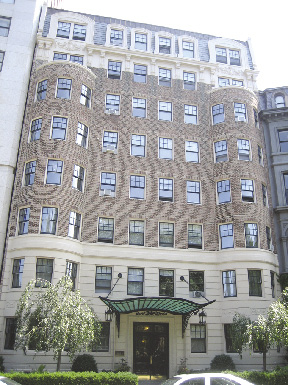To help protect and preserve the unique historic and architectural character of Boston's neighborhoods, the city of Boston has designated nine local historic district commissions to review proposed exterior design changes to properties located within the boundaries of each of the following districts: Aberdeen Architectural Conservation district; Back Bay Architectural district; Bay State Road/Back Bay West Architectural Conservation district; Bay Village historic district; Historic Beacon Hill district; Fort Point Channel Landmark district; Mission Hill Triangle Architectural Conservation district; South End Landmark district; and St. Botolph Architectural Conservation district.
Historic District Commissions
Any property located within a local historic district is subject to the architectural guidelines or standards and criteria for that district, and exterior changes are subject to the review and approval of the appropriate historic district commission, regardless of whether or not the property itself is considered an individual Boston landmark. No matter how minor the work might be, anything that will be visible from the public way is subject to review by the commission. Preservation planners within the staff of the Boston landmarks commission administer these local historic districts. Their obligation is to protect the beauty of the city of Boston and improve the quality of its environment. All proposed work to the exterior of properties within a district must be approved by the appropriate district commission before a building permit will be issued. Work performed without prior commission review and approval will result in the issuance of a violation. If a violation is issued, a representative of the property will likely be required to appear before the commission and perform work to remediate the violation. Violations are subject to fines that may escalate over time. The historic district commissions do not have jurisdiction over use, occupancy issues, or zoning matters. If a project requires zoning relief, all necessary variances must be received from the zoning board of appeal before the project can be reviewed by a local historic district commission.
Selecting a Contractor
Products and service providers are not pre-approved for work in the districts. Applicants should do their own research when choosing a contractor. A typical approach is for the owner/manager to interview one or more qualified contractors during the conceptual and design phase of the project. This allows candidate contractors to present its strategy for the job, considering such factors as phasing and sequencing, material and equipment choices, and labor. The contractors' advisory input can be valuable to the owner/manager in developing their design concept, and can influence contractor selection. An architectural/engineering firm is often involved to assist the building owner in developing the project specifications.
Abbot Building Restoration
Abbot Building Restoration works diligently to assure that any project under the jurisdiction of one of Boston's local historic district commissions complies with their guidelines. Examples of recent projects are presented below.
12 Commonwealth Ave.
12 Commonwealth Ave. is a historic 8-story building located in the Back Bay District. Recognizing that the building was in need of restoration, owner hired Commercial Construction Consulting (C3) to investigate the problems, and to develop the plans and specifications. Importantly, the specifications had to be reviewed by the Back Bay architectural commission to assure that all restoration was consistent with their regulations. The building owner and C3 selected Abbot as the masonry contractor for the project. As part of the restoration project, the building owner agreed to restore the ornamental steel canopy that is situated over the front stairway to its original appearance. The canopy had deteriorated and become fragile over time. According to the regulations set forth by the Back Bay architectural commission, Abbot carefully removed the canopy, chains, and chandeliers, and stripped all of the paint. Then Abbot structurally reinforced the canopy, restored all of the ornamental rosettes and flowers to their original detail, and repainted, reglazed, and reinstalled the canopy.
Part two will appear in the May 18th edition of the New England Real Estate Journal in the CDE section.
Michael Norman is president of Abbot Building Restoration, Inc., Boston, Mass.
Tags:
To protect and preserve Boston's historic district - Part 1
May 03, 2012 - Owners Developers & Managers
 (1).png)









